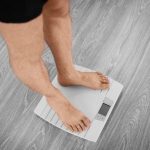
Endless worry, irritability and insomnia are all symptoms of a possible anxiety disorder. Luckily, there are numerous anxiety medications that can help ease the condition. Joy Alonzo, a specialist in the pharmacotherapy of mental disorders at Texas A&M’s College of Pharmacy, said recently, “If you understand the different types of medication, then you can become a better advocate for your anxiety treatment. Anxiety is one of the most under-treated mental illnesses, and we need to talk more about it.” So, what medications can bring relief from crippling anxiety? According to the Anxiety & Depression Association of America (ADAA), the most common classes of drugs for the treatment of anxiety include: Selective serotonin reuptake inhibitors (SSRIs) Serotonin-norepinephrine reuptake inhibitors (SNRIs) Benzodiazepines Tricyclic antidepressants Here is a rundown on medications for anxiety. Selective serotonin reuptake inhibitors (SSRIs) SSRIs work by preventing the body from reabsorbing serotonin, which leaves more available for use. The ADAA describes serotonin as a neurotransmitter that plays a role in feelings of well-being and happiness. SSRIs are considered the first-line treatment for all types of anxiety disorders. A higher dose may be required when treating obsessive-compulsive disorder (OCD). Common side effects: Insomnia Sleepiness Sexual dysfunction Weight gain Dry mouth Common SSRIs: Citalopram (Celexa) Escitalopram (Lexapro) Fluoxetine (Prozac, Sarafem) Paroxetine (Paxil, Paxil CR, Pexeva, Brisdelle) Sertraline (Zoloft) What else you should know about SSRIs:… read on > read on >
























-300x200.jpg)













